Post by Tonia Bautista, undergraduate Psychology major and interdisciplinary neuroscience minor at Portland State University.
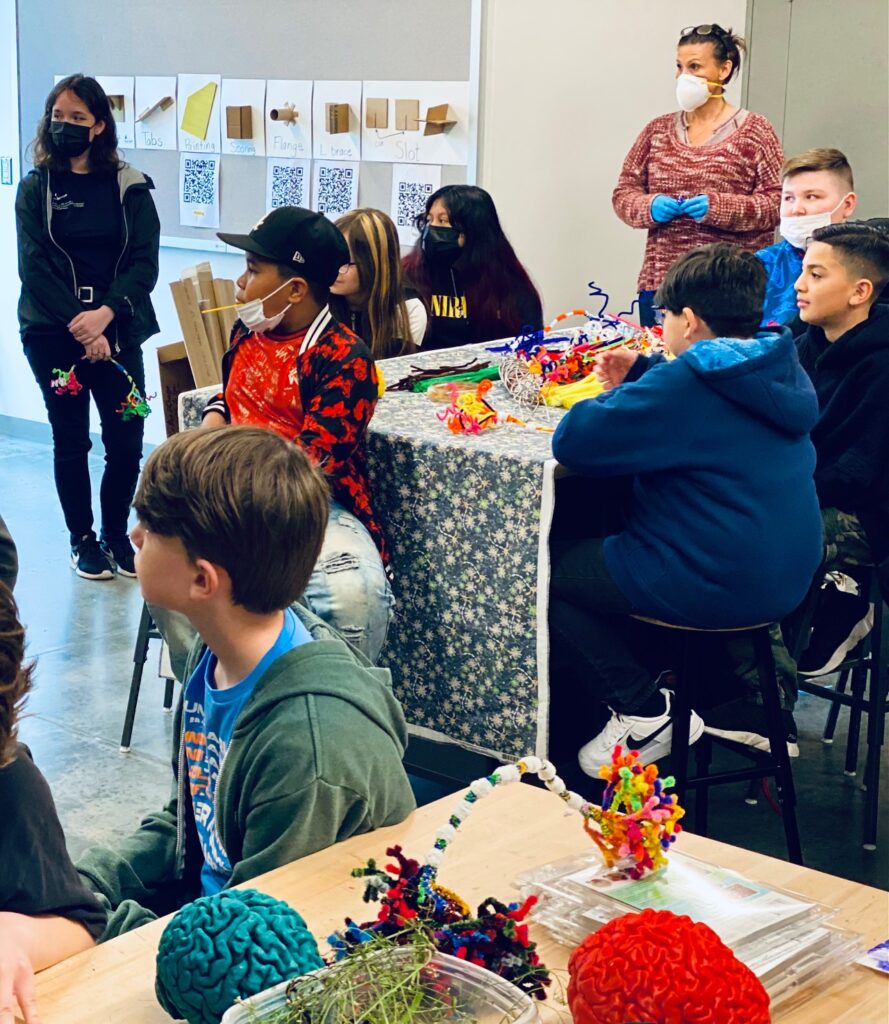
Tonia joined Noggin outreach volunteers at Ogden Elementary in Vancouver Public Schools this month, including fellow PSU undergraduates Yasaman Farhand, Britta Harbury, Kristin Preston, Roman Cimkovich, Elizabeth Munk, Lauren Kuiper, Hannah Shawo, Tira Gaston and Zoie Harpole, PSU graduate Kass Fitzgerald and PSU grad and OHSU laboratory alum Johnny Uriarte-Lopez!
Noggin had joined Ogden students pre-pandemic to consider brains and make art.

LEARN MORE: Occipital lobes at Ogden!
Outreach at Ogden
I’m pursuing an interdisciplinary neuroscience minor at Portland State University, and this week I had my first NW Noggin experience with younger (non-high school) students at Ogden Elementary School in Vancouver. The visit was amazing!
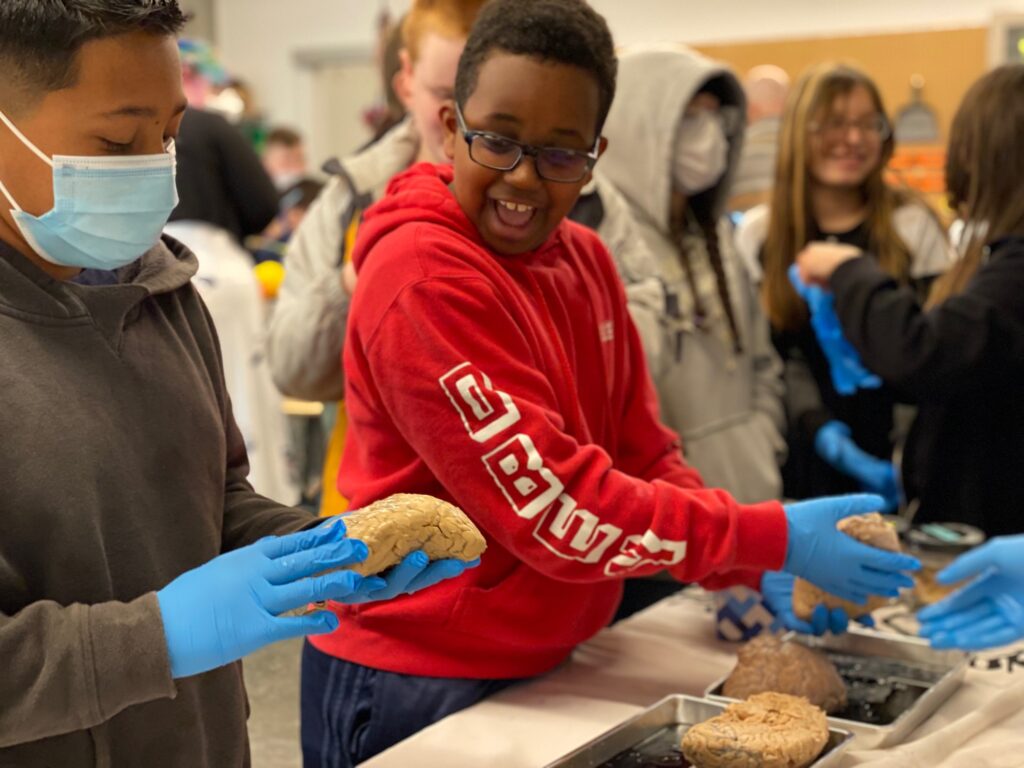
Not only did students come up with excellent questions for us about noggins and nervous systems – but one third grader even asked specifically about the gut/microbiome and its connection to the brain!

The human microbiome, or community of microorganisms that reside on and within us, has become a rapidly growing area of study with exciting therapeutic prospects. With the human body hosting a nearly equal ratio of bacterial to human cells, understanding our cohabitants and the host-microbiome relationship could elucidate how microbes might cause, treat, modulate, or even prevent disease.
— Zoya Grigoryan, et al
LEARN MORE: The Human Microbiome and Its Impacts on Health
LEARN MORE: Scientists bust myth that our bodies have more bacteria than human cells
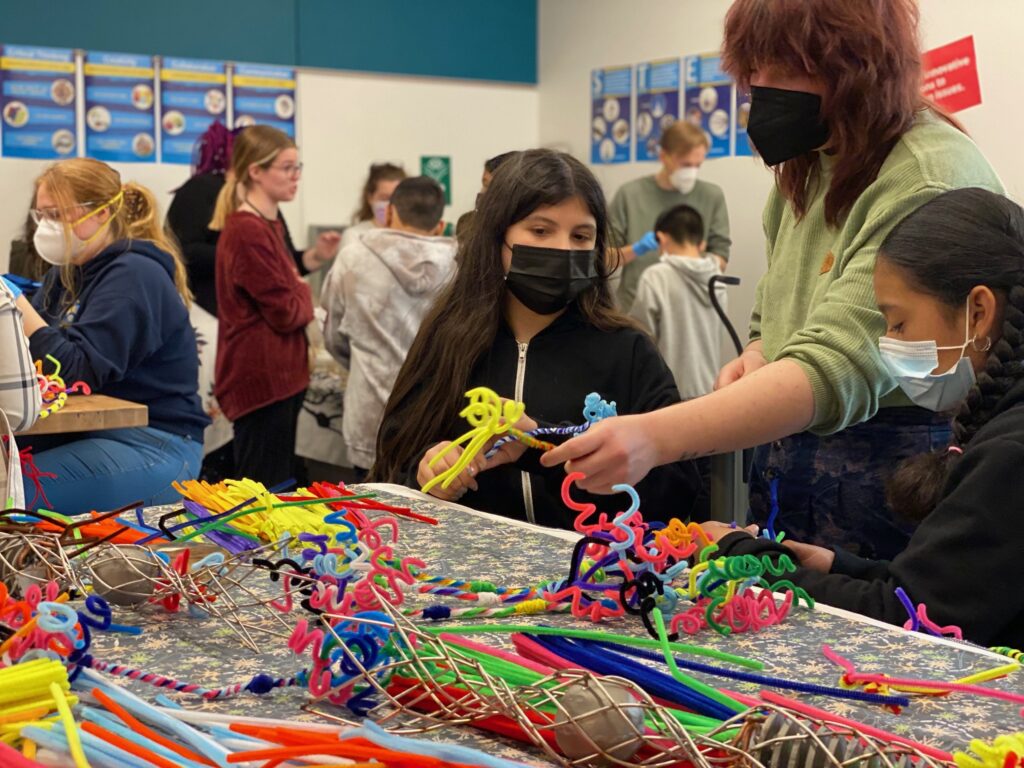
I’m pretty certain that this student also understood on some level that this connection plays a role in our mood and emotional expression. Amazing! I’m not even convinced that all the Noggin volunteers were fully aware of these significant and somewhat recent discoveries in neuroscience.
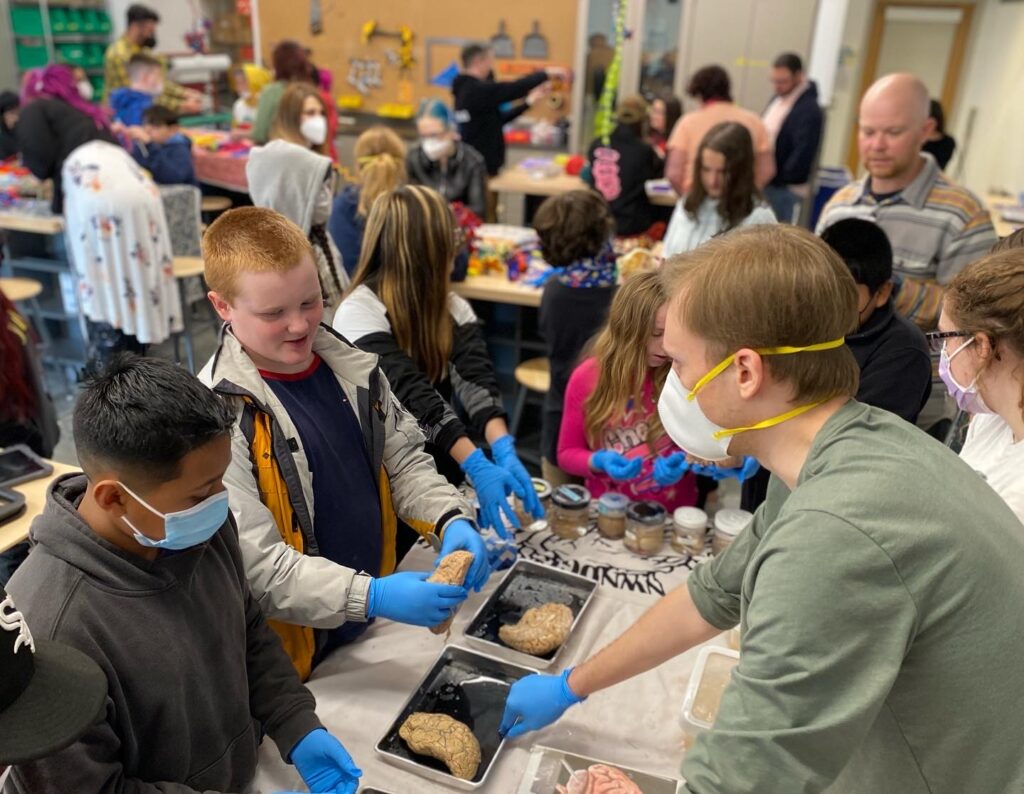
In response to the young lady’s inquiry, our Professor assured her that she was absolutely correct. I found it entertaining that he noted in his reply that these microbiomes function as ecosystems and play a significant part in our wellness, in fact to such a degree that it is becoming common to transplant the biome of a healthy individual into the digestive system of a sick person to improve their health!
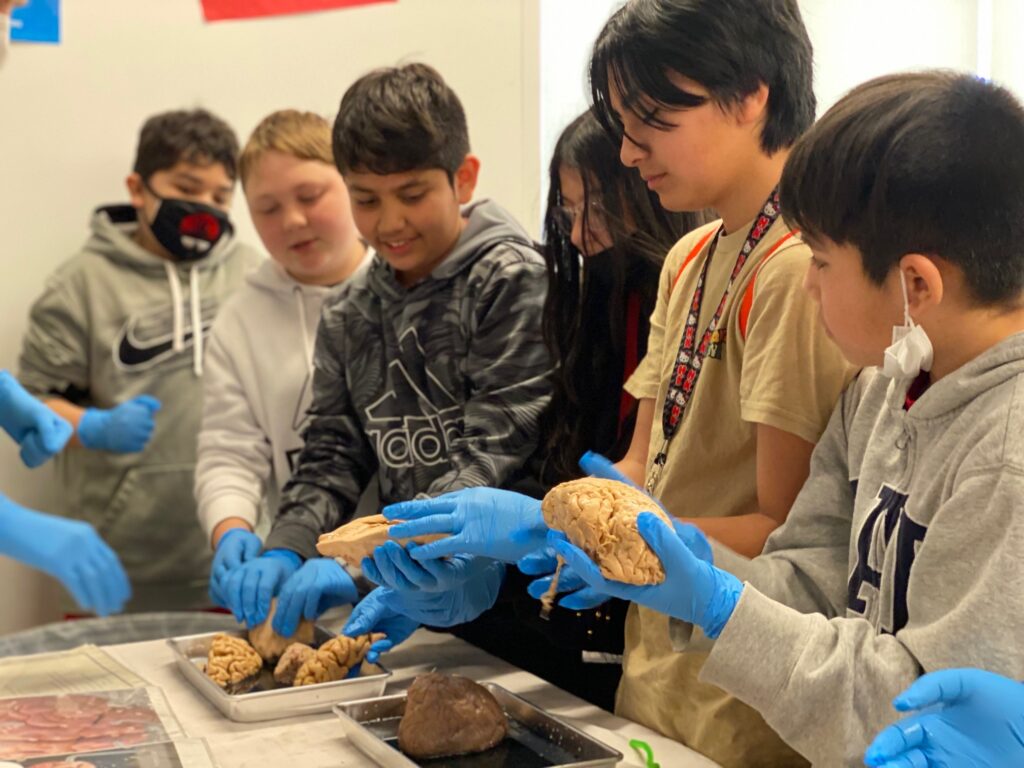
One of the most well-known forms of microbiome-based therapy is fecal microbiota transplantation (FMT), in which a fecal suspension from a healthy donor is deposited into the gastrointestinal (GI) tract of a patient via endoscope, nasal tube, or capsule.
— Zoya Grigoryan, et al
LEARN MORE: Fecal microbiota transplantation: Review and update
LEARN MORE: Fecal microbiota transplantation helps restore beneficial bacteria in cancer patients
LEARN MORE: Fecal microbiota transplantation: Uses, questions, and ethics
I don’t think all students understood that Bill was talking about fecal microbiome transplantation as I am sure I’d see more silly facial gestures if not outright laughter if they had. This was not because the kids weren’t listening. They were very attentive.

It was incredible to watch these remarkable students act so mature, and demonstrate self-regulation seemingly beyond their 7–12 years. Though Bill’s comment wasn’t fully deciphered, they were engaged, and eager to start the activities. Moving freely around the room they took interest in all the various art projects—Noggin-style—and of course the chance to touch some human brains.

Making Art
I had the privilege of working with NW Noggin for the first time at Ogden school and I enjoyed working with students whose curiosity was amazing. Their questions about the brain and its function opened many doors to interesting discussions about neuroscience which I am really passionate about.
— Yasaman Farhand, interdisciplinary neuroscience undergraduate @ Portland State University

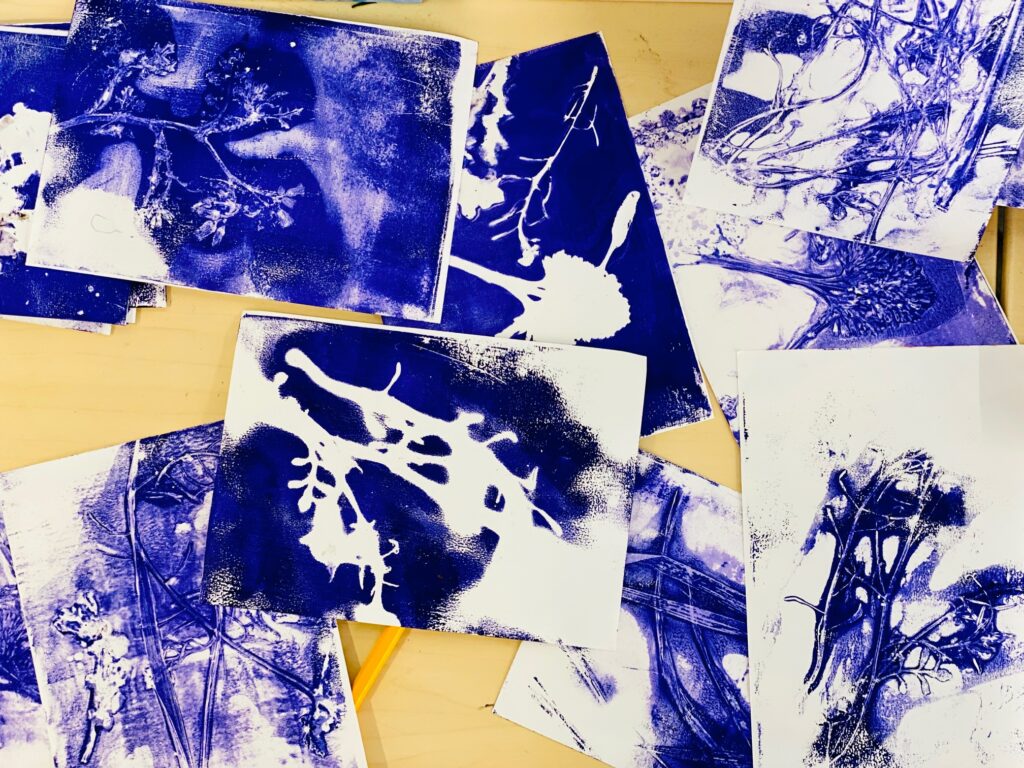
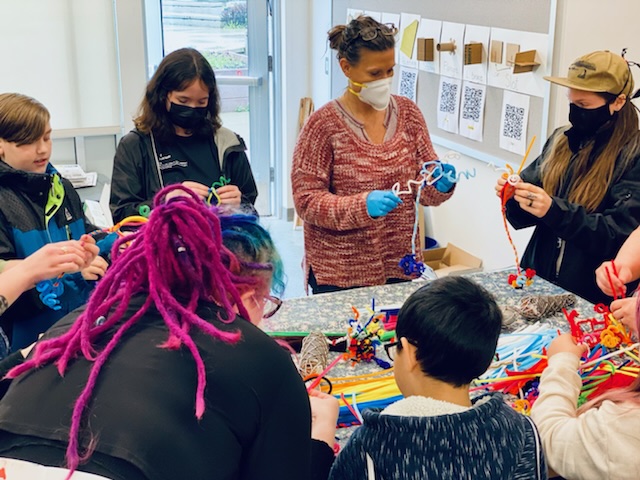
LEARN MORE: Pipe Cleaner Neurons & Glia
LEARN MORE: Neuron & Glia Gel Prints
I chose to work with a small group of other Noggin volunteers who took initiative in teaching each step in building a pipe cleaner neuron that students could take home with them. The elementary students I worked with appeared shy at first, though I think they were just taking cues from us older students because all it took was a question to get things started.
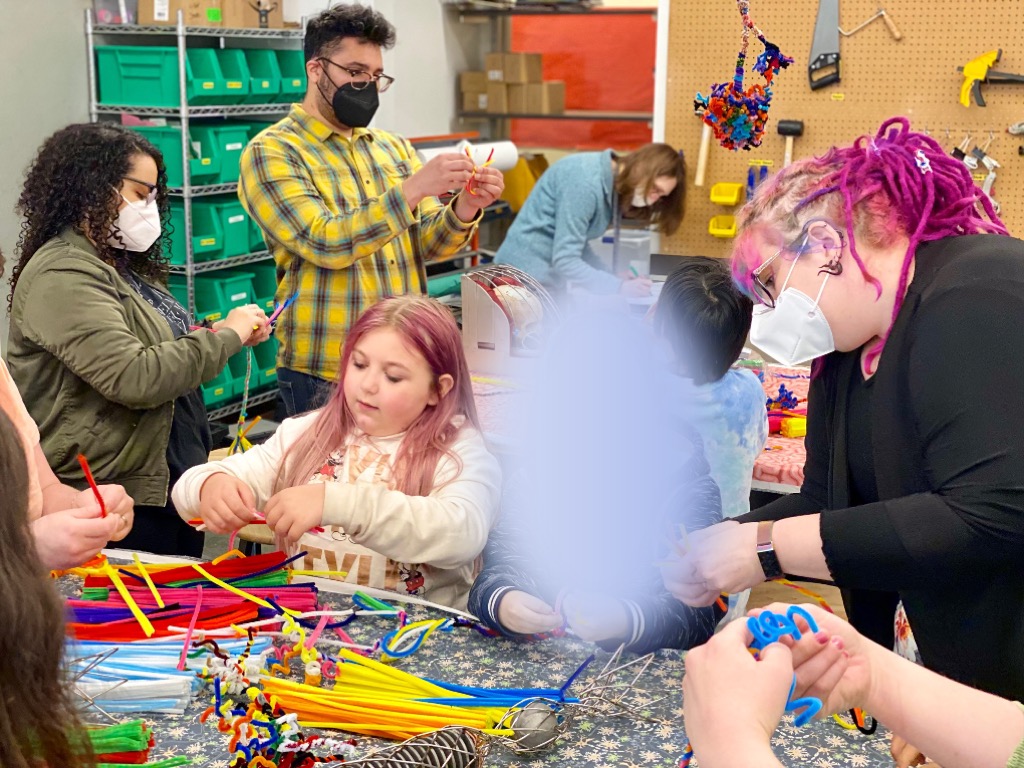
“Do you guys know what these pipe cleaner art pieces we’re making are supposed to be?” we were asked. We took that as a prompt and in 1:1 or 1:2 ratios each student got their own personal introduction to neurons, including what they are, what they do, where they are found and how they function.

One student wanted to know more about the metal rod and cone models that sat on our table. These are gorgeous, light up photoreceptors (!!) made by a former PSU student, Darrin Lane.
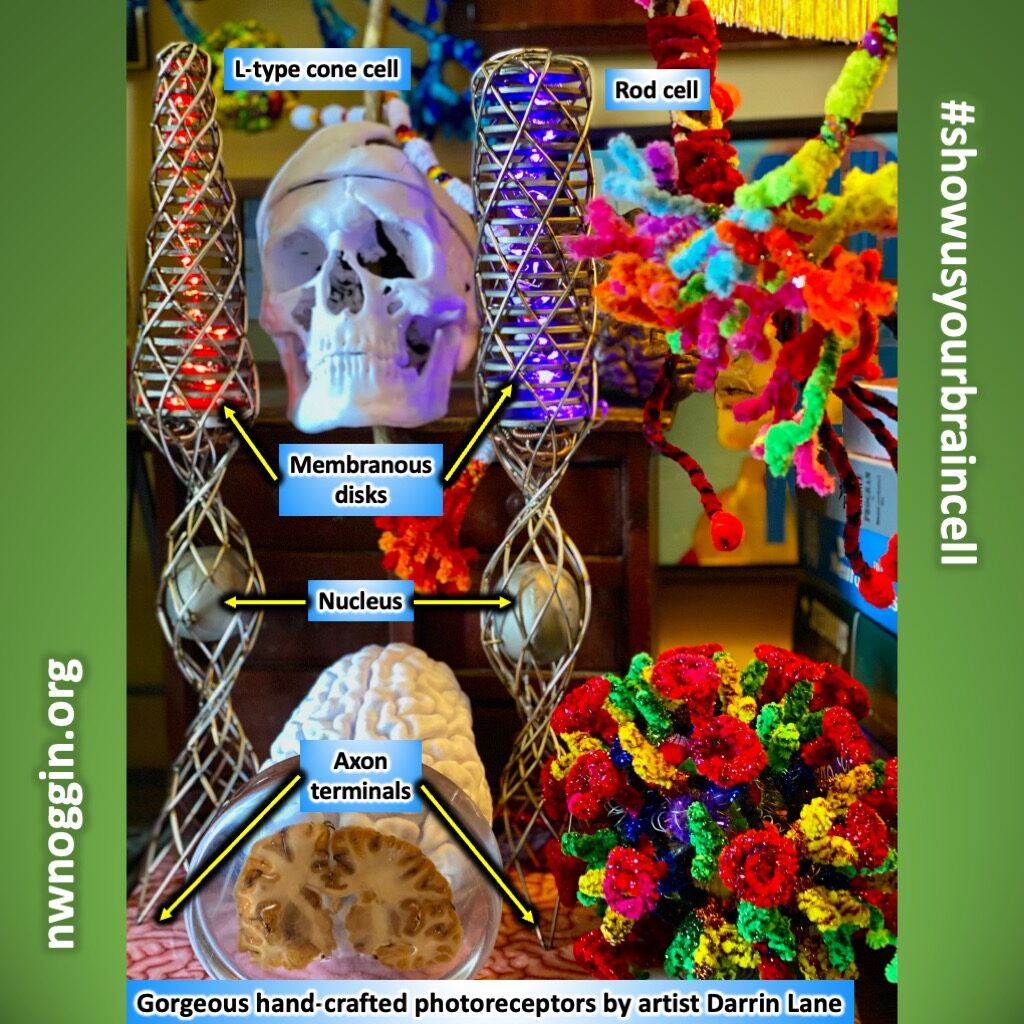

I gave him my best explanation!
Photoreceptors are a special type of sensory neuron in the back of our eyes (in an area called the retina) that absorb light and cause electricity to leave the eyes along these wire-like axons of other retinal cells called ganglion cells. The ganglion cell axons send visual information further into our brains, where specific areas receive the signal and let us perceive both what we’re seeing and where it is! It was exciting to explain this, as maybe we sometimes take for granted all that our vision provides.

This young man had no trouble and he took my description to generate very informed, thoughtful and genuine questions. He was curious about which end of the photoreceptors absorbed the light (it’s the end with the LED-embedded membranous disks) and which end signaled the brain as he rotated the metal rods and cones seeking the correct position. The tactile opportunities provided by these beautiful 3D models sparked and retained interest, and I felt honored to share this student’s experience.
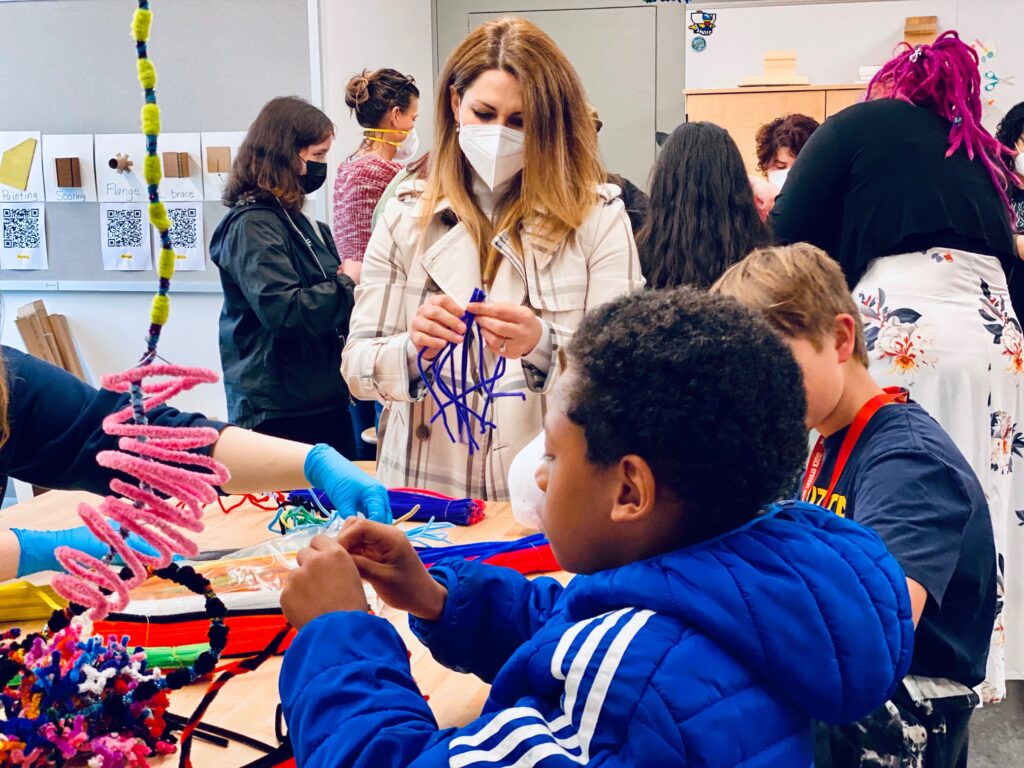
It was hard to imagine a photoreceptor as small as it truly is (I have problems with this too honestly).

But the many models and brains and skulls we brought to school helped all of us at least begin to grasp aspects of the remarkable structures that make us who we are.
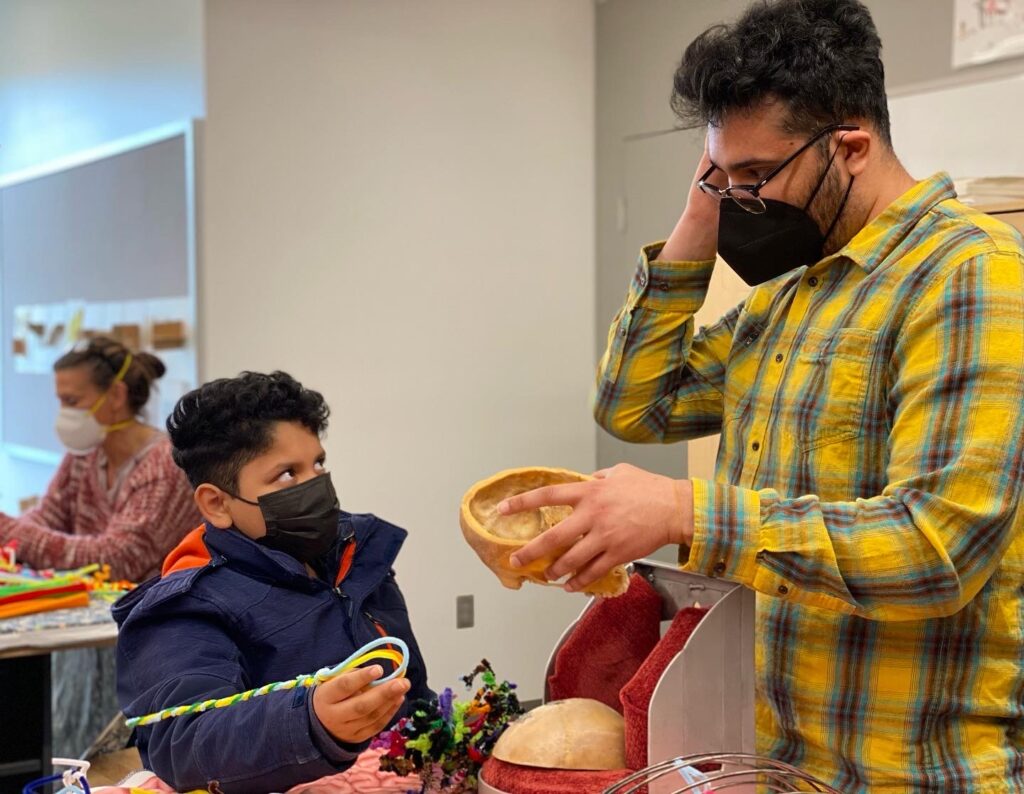


Despite the challenges, the models held this student’s curiosity and he kept at it, switching the way he held the cone while trying to get it right. This is really what this program is all about and I say thank you so much to Ogden students and their teachers. Get ready world: there are some developing super scientists here with tons of action POTENTIAL!
More from Noggin volunteer Kristin Preston, Portland State University
It was such an enriching experience to learn alongside these brilliant Neuroscientists-in-training!

Though they were quite effervescent and excited about being released from the classroom to learn about and TOUCH REAL HUMAN BRAINS, they were very attentive and asked so many intelligent and impressive questions.

We made pipe cleaner neurons together under the guidance of Dr. Bill Griesar and, with the help of Professor Jeff Leake, we made some lovely ink-pad neurons with some foraged flowers and plants. The pièce de résistance, though, must surely have been the live brains, though some children were understandably apprehensive at the thought of handling the preserved organ, others leapt at the chance to don their gloves and hold BRAINS!!!
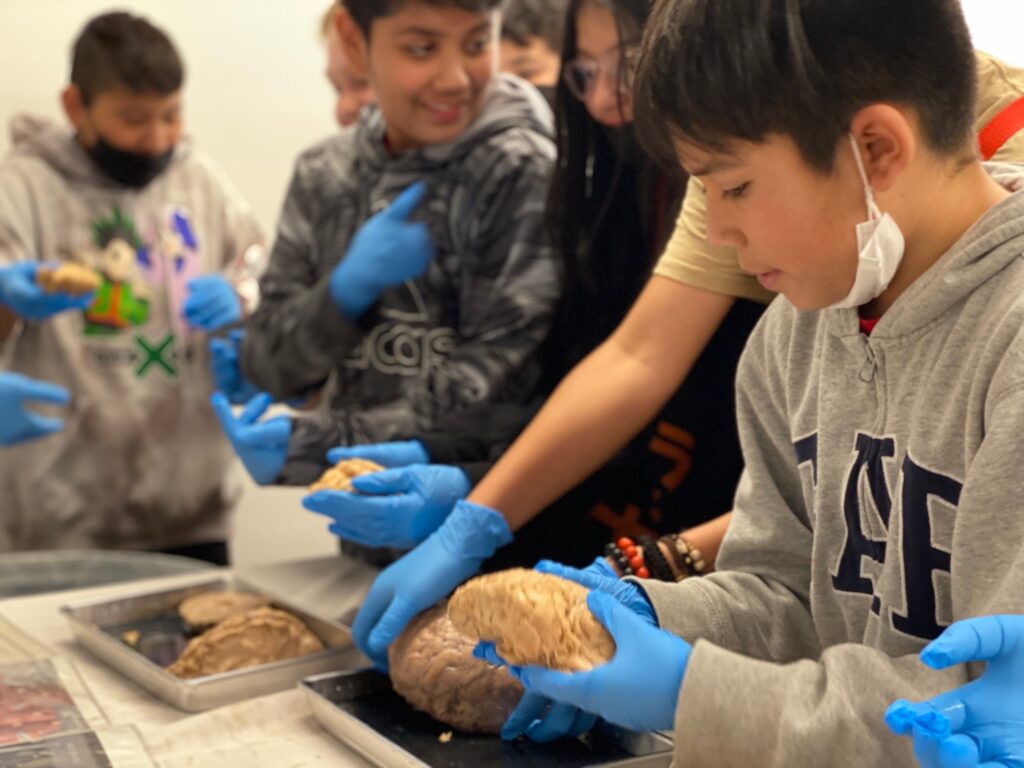
Sharing such an experience with bright young children alongside fellow undergraduate students, graduate students, professionals in the field, and our professors was such an amazing gift of knowledge and networking. I learned a great deal from those currently working in laboratories about what might be expected in those careers as well as from all the questions asked and answered in the classroom.

During our break, we were able to sit together enjoying snacks and discussing our experiences both in the classroom with the students and in our educational and career paths with our professors and our colleagues. I believe we can all say that it was a beautiful and life-changing day and I cannot wait to enjoy time with the Noggins again soon!

Thanks again to all of you. The kids loved the experience and I know that will stick as a core memory with quite a few of them for their lives. I loved it too.
— Rob Harsch, K-5 makerspace teacher, Ogden Elementary


